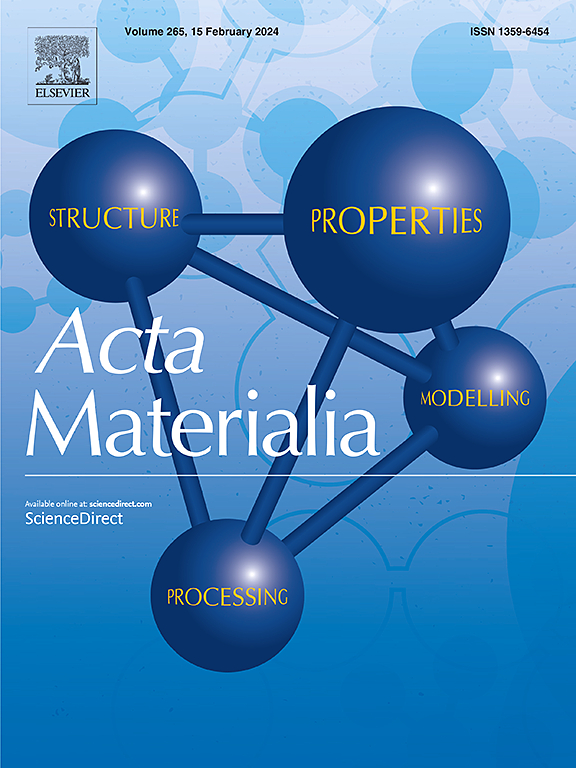Predicting hydrogen storage properties of multicomponent metal hydrides: Modeling of pressure, capacity, hysteresis, and slope
IF 9.3
1区 材料科学
Q1 MATERIALS SCIENCE, MULTIDISCIPLINARY
引用次数: 0
Abstract
Metal hydrides are considered as an important group of materials in the future hydrogen-based economy. Their development is mostly based on time-consuming experimental trial-and-error methods. This work accelerates this pathway using a computational framework for the thermodynamic modeling of metal hydrides under para-equilibrium conditions. By employing the CALPHAD method on a six-component AB5-type (Ce, La)(Ni, Al, Fe, Mn)5–H system, we are able to make precise predictions regarding hydrogen absorption enthalpies, plateau pressures, and hydrogen sorption capacities. Additionally, this is the first time the hydrogenation/dehydroganation hysteresis effect has been successfully modeled using separate thermodynamic databases for hydrogen absorption and desorption. Furthermore, we introduce a method to directly calculate sloped pressure–composition–temperature (PCT) curves from X-ray diffraction data. This validation demonstrates the framework’s capability to assess the hydrogen storage properties of complex multi-component systems in an efficient manner. This work lays the groundwork for future metal hydride thermodynamic studies on a variety of material classes, as well as optimization of alloys for applications even beyond classical hydrogen storage.


预测多组分金属氢化物的储氢特性:压力、容量、迟滞和斜率的建模
金属氢化物被认为是未来氢基经济中重要的一类材料。它们的开发主要基于耗时的实验试错方法。这项工作使用了准平衡条件下金属氢化物热力学建模的计算框架,加速了这一途径。通过对六组分ab5型(Ce, La)(Ni, Al, Fe, Mn) 5-H体系采用CALPHAD方法,我们能够对吸氢焓、平台压力和吸氢能力做出精确的预测。此外,这是第一次成功地利用氢气吸收和解吸的单独热力学数据库来模拟加氢/脱氢滞后效应。此外,我们还介绍了一种从x射线衍射数据直接计算压力-成分-温度(PCT)斜率曲线的方法。该验证证明了该框架能够以有效的方式评估复杂多组分系统的储氢特性。这项工作为未来在各种材料类别上的金属氢化物热力学研究奠定了基础,也为合金的应用优化奠定了基础,甚至超越了经典的储氢技术。
本文章由计算机程序翻译,如有差异,请以英文原文为准。
求助全文
约1分钟内获得全文
求助全文
来源期刊

Acta Materialia
工程技术-材料科学:综合
CiteScore
16.10
自引率
8.50%
发文量
801
审稿时长
53 days
期刊介绍:
Acta Materialia serves as a platform for publishing full-length, original papers and commissioned overviews that contribute to a profound understanding of the correlation between the processing, structure, and properties of inorganic materials. The journal seeks papers with high impact potential or those that significantly propel the field forward. The scope includes the atomic and molecular arrangements, chemical and electronic structures, and microstructure of materials, focusing on their mechanical or functional behavior across all length scales, including nanostructures.
 求助内容:
求助内容: 应助结果提醒方式:
应助结果提醒方式:


